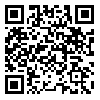Volume 21, Issue 2 (Summer 2024)
Sci J Iran Blood Transfus Organ 2024, 21(2): 118-128 |
Back to browse issues page
Download citation:
BibTeX | RIS | EndNote | Medlars | ProCite | Reference Manager | RefWorks
Send citation to:



BibTeX | RIS | EndNote | Medlars | ProCite | Reference Manager | RefWorks
Send citation to:
Yari F, Zaman Vaziri M, Bagheri N, Teimourpour A, Sabaghi F, Mortezapour Barfi F. Investigating the distribution of HLA-DRB1 allelic groups in Iranian ethnic groups. Sci J Iran Blood Transfus Organ 2024; 21 (2) :118-128
URL: http://bloodjournal.ir/article-1-1533-en.html
URL: http://bloodjournal.ir/article-1-1533-en.html
Abstract: (905 Views)
Abstract
Background and Objectives
This study looked at the frequency of HLA alleles and their genetic diversity in specific Iranian ethnic groups. This is important for the successful transplantation of hematopoietic stem cells.
Materials and Methods
In this descriptive study, HLA-DRB1 alleles were determined in low resolution level for donors using the PCR-SSP method. By using the HLA lab data and the stem cell donors’ information in Iranian Blood Transfusion Organization, the ethnic and HLA information from the Gilak (n = 510, 24.70%), Lur (n = 465, 22.53%), Kurd (n = 719, 34.84%), and Arab (n = 370, 17.93%) ethnicities were collected and analyzed. The relationship between alleles and ethnicity was examined, and a statistically significant relationship (p < 0.05) between the frequency of alleles in the studied ethnic groups was evaluated using the chi-square test.
Results
The low frequency allelic groups related to HLA-DRB1 were HLA-DRB1*09 (0.6%), HLA-DRB1*12 (0.8%), and HLA-DRB1*08 (1.6%). Allelic groups with higher frequency included HLA-DRB1*11 (22.7%), HLA-DRB1*03 (11.8%), HLA-DRB1*15 (11.7%), and HLA-DRB1*04 (11.1%). Among the allelic groups of HLA-DRB1, the frequency of 9 HLA-DRB1 allelic groups showed significant differences in the studied populations.
Conclusions
The frequency of several allelic groups showed significant differences among Iranian ethnicities. Identifying similarities and differences in the frequency of HLA alleles among Iranian ethnicities can help not only expand the pool of donors in registries but also assist in planning for providing of hematopoietic stem cell donors for patients from different Iranian ethnic groups.
Background and Objectives
This study looked at the frequency of HLA alleles and their genetic diversity in specific Iranian ethnic groups. This is important for the successful transplantation of hematopoietic stem cells.
Materials and Methods
In this descriptive study, HLA-DRB1 alleles were determined in low resolution level for donors using the PCR-SSP method. By using the HLA lab data and the stem cell donors’ information in Iranian Blood Transfusion Organization, the ethnic and HLA information from the Gilak (n = 510, 24.70%), Lur (n = 465, 22.53%), Kurd (n = 719, 34.84%), and Arab (n = 370, 17.93%) ethnicities were collected and analyzed. The relationship between alleles and ethnicity was examined, and a statistically significant relationship (p < 0.05) between the frequency of alleles in the studied ethnic groups was evaluated using the chi-square test.
Results
The low frequency allelic groups related to HLA-DRB1 were HLA-DRB1*09 (0.6%), HLA-DRB1*12 (0.8%), and HLA-DRB1*08 (1.6%). Allelic groups with higher frequency included HLA-DRB1*11 (22.7%), HLA-DRB1*03 (11.8%), HLA-DRB1*15 (11.7%), and HLA-DRB1*04 (11.1%). Among the allelic groups of HLA-DRB1, the frequency of 9 HLA-DRB1 allelic groups showed significant differences in the studied populations.
Conclusions
The frequency of several allelic groups showed significant differences among Iranian ethnicities. Identifying similarities and differences in the frequency of HLA alleles among Iranian ethnicities can help not only expand the pool of donors in registries but also assist in planning for providing of hematopoietic stem cell donors for patients from different Iranian ethnic groups.
Send email to the article author
| Rights and permissions | |
 |
This work is licensed under a Creative Commons Attribution-NonCommercial 4.0 International License. |






